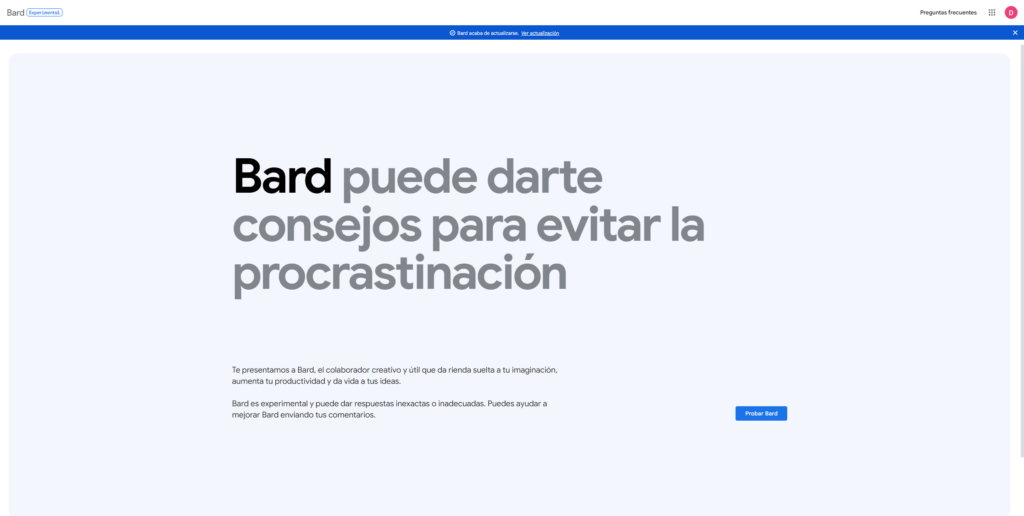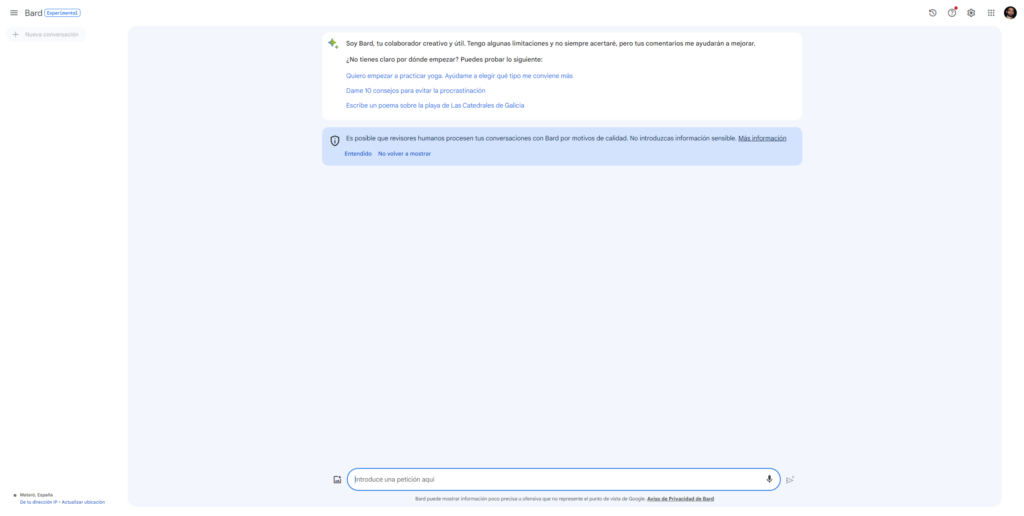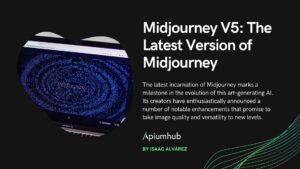Table of Contents
In its constant quest to optimize the user experience in artificial intelligence, Google has introduced Bard, its latest and most advanced conversational system.
This innovative tool not only promises to stay up-to-date thanks to its permanent connection to the Internet, distinguishing it from other systems such as ChatGPT, but it also seeks to revolutionize the way we interact with technology. From its ability to interpret and describe images to its promising integration with other leading services such as Gmail, Docs, and Google Lens, Bard is shaping up to be the central nexus in Google’s service ecosystem. Moreover, its collaboration with Adobe Firefly suggests a horizon where the generation and understanding of visual content reach unprecedented levels. Although still in an experimental phase, Bard promises to redefine the boundaries of what we expect from an AI system.
In this article, we will explore in depth the features, functionalities, and transformative potential of Bard in the world of computing and communication.
What is Bard?
Google has developed an advanced artificial intelligence system called Bard. This system allows interaction with users through conventional text messages. Individuals can direct questions or request specific actions, to which Bard will respond appropriately.
This innovative artificial intelligence system from the renowned technology company is based on LaMDA, a sophisticated language model designed especially for dialog applications. For a period, LaMDA was kept in a restrictive evaluation phase, being accessible only to a select group of individuals.
It is interesting to note that, since its inception, Google has already counted on LaMDA as a potential competitor to ChatGPT. However, the company chose to keep it in an experimental phase so as not to compromise its prestige, considering that it was not fully perfected.
The name LaMDA comes from the acronym “Language Model for Dialogue Applications”. Nevertheless, at its official launch, Google decided to rename it “Bard”. In the course of its development, LaMDA was the subject of several anecdotes, such as the case of an engineer who was dismissed after insinuating that the system had a “conscience”.
At the European level, specifically in the European Union, the initial deployment of Bard was delayed. The underlying reason was Google’s need to bring the system in line with regulations set by the Data Protection Regulation (GDPR) and other relevant regulations. However, as of July 13, 2023, Bard had finally made its entry into the Spanish market.
In terms of functionality, Google clarifies that Bard has the ability to gather information from the web to provide “accurate and up-to-date answers”. Its main purpose is to provide the user with comprehensive and clear answers on any topic, thus enhancing web searches through the use of natural language.
Differences between Bard and ChatGPT
One of the distinctive features of Bard is its constant connection to the Internet. This feature is essential, especially when compared to systems such as ChatGPT that do not maintain such a connection. Consequently, while ChatGPT may offer outdated information, Bard is positioned as a more up-to-date tool.
One of the most novel aspects of Bard is its ability to interpret images. The system currently allows the inclusion of image links, and it is expected that images can be attached directly from personal devices in the near future. Through this function, Bard can provide a detailed description of the image in question. However, it is pertinent to mention that, as with ChatGPT and other text generation systems, accuracy is not always guaranteed. While it can provide a general idea about the content, it is the user’s responsibility to corroborate the accuracy of the information provided.
Another feature that distinguishes Bard from systems such as ChatGPT is the ability to provide voice responses. This feature is especially useful when the user does not have the ability to read lengthy responses. In addition, it represents an essential tool for people with visual impairments, allowing them to access the information generated by the AI.
For users accustomed to Google applications, Bard promises to be a tool that will optimize their daily experience. It is expected to integrate with Gmail and Docs, facilitating the interaction of AI-generated responses with these services. Also, Google Lens will be embedded in its interface, enabling image-enriched queries for more accurate results. Google’s underlying goal is to achieve an efficient interconnection of its services through Bard.
Along the same lines of expansion, Google has announced a partnership with Adobe Firefly. Beyond image interpretation, this partnership promises to bring image generation to Bard, further enriching the system’s visual capabilities.

How to test Bard?
For anyone who wants to try this new artificial intelligence, all we have to do is access the following link and register with our Google account.

Now you will see a button with the option to Test Bard. Click on it and then accept the terms and conditions of the platform.
Finally Google will warn us that Bard is in an experimental state, and once we have closed this dialog, we will be able to start using Bard for free.

As we explained in our article about ChatGPT, Bard works exactly the same way. You have to ask it something in the text box, and the AI will try to give you the answer you expect.
Conclusion
In the current landscape of artificial intelligence, Bard emerges as Google’s promise to revolutionize user-technology interaction.
Unlike other systems, its constant connection to the web positions it as an always-up-to-date source of information, while its ability to interpret images and provide vocal responses broadens its horizons of utility. The planned integration with Google’s flagship services and collaboration with Adobe hint at a future where Bard becomes the backbone of an integrated and visually enriched digital ecosystem.
While still in its experimental phase, the prospects for Bard are encouraging. As with any emerging technology, it will be crucial that users and developers approach its capabilities and limitations with discernment. However, one thing is certain: with Bard, Google is taking bold steps into the future of communication and information search through artificial intelligence.
Author
-

I consider myself a proactive, responsible, understandable person who works well in a team. In my work I need challenges and be constantly learning. I want to grow personally and professionally.
View all posts











